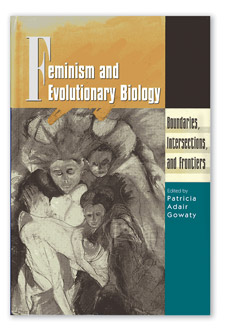


by Judy Purdy
Intro
| The Promise of Promiscuity
| Preferred Mates Breed Success
Romance vs. Matchmaking
| Package Deals
| Environment Triggers Behavior

![]()

Intro
In the animal kingdom’s perennial battle of the sexes, the prize is the fitness and survival of one’s children.Offspring fitness and survival — and quite possibly an entire population’s evolution — ride on the outcome of the high-stakes wager of mate choice.
“Both sexes have a vested interest in controlling reproduction,” according to evolutionary ecologist Patricia Adair Gowaty. Wild animals display not just cooperative behavior but also an arsenal of inherited courtship behaviors to coerce, resist, manipulate or deceive prospective suitors and competitors. The resulting genetic combinations equip or doom the next generation’s efforts to thrive and multiply.
In experiments with birds, insects, mice and fish, Gowaty and her international collaborators have shown that when both mom and dad win the chosen partner, the couple produces higher-quality young who themselves are more likely to survive and become parents. “Not everybody gets to be with the one they love, and reproduction with the one you don’t love is associated with a significant deficit in offspring viability,” said Gowaty, a University of Georgia Distinguished Research Professor.
And more than likely the best partner is not the quintessential, obvious heart throb. “I’m talking about a self-referential mate choice,” she said, “not a most-preferred male that all females like, or vice versa.”
Gowaty has proposed two theories to predict the consequences of mate choice. Her constraints theory says that moms and dads bear less-fit offspring when one or both must settle for a less-desirable partner, are coerced into a partnership or are simply unlucky in love because of social or ecological circumstances. Her compensation theory posits that parents caught in unfavorable, or “constrained,” unions try to compensate for their young’s relatively poorer fitness compared with other offspring. Constrained parents might lay larger eggs or deliver more sperm so as to produce more or better young in an effort to keep pace with neighbors who win their “most-preferred” partners. When neither parent gets a preferred mate, Gowaty speculates that these constrained couples might actually cooperate more as parents.
Intro
| The Promise of Promiscuity
| Preferred Mates Breed Success
Romance vs. Matchmaking
| Package Deals
| Environment Triggers Behavior
For comments or for information please e-mail the editor: jbp@ovpr.uga.edu
To contact the webmaster please email: ovprweb@uga.edu
![]()